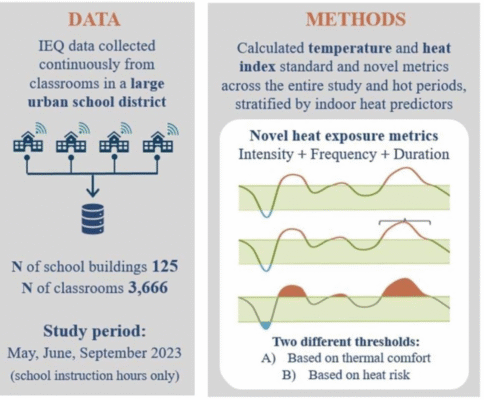As global temperatures rise, heat exposure in classrooms is becoming a growing concern for the millions of students attending school, in particular those learning in buildings without air conditioning (AC). With limited resources and competing interests, school decision-makers need health-related data-based approaches to inform cooling solutions and prioritize investments.
Highlights
- Monitoring temperature across ∼3600 classrooms in a school district helped identify cooling needs and prioritize investments.
- Central and window AC classrooms maintained comfortable temperatures compared to no AC, with central AC being most effective.
- Temperature variability between classrooms in the same building was 2.3°C on average, with a maximum difference of 14.4°C.
- Classrooms at ground levels were up to 6°C cooler than those in upper levels in school buildings without mechanical cooling.
- Novel temperature metrics captured frequency, duration and intensity nuances of heat exposure, complementing central tendency values.
See entire study in Indoor Environments, Volume 2, Issue 3, here

